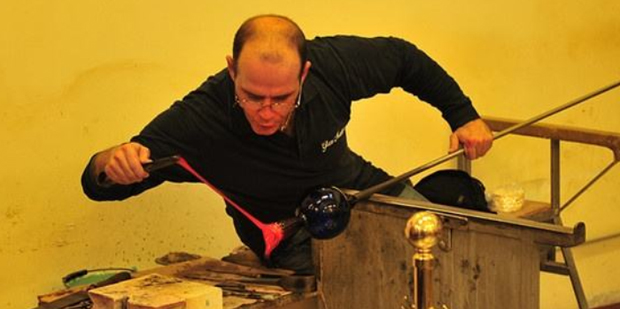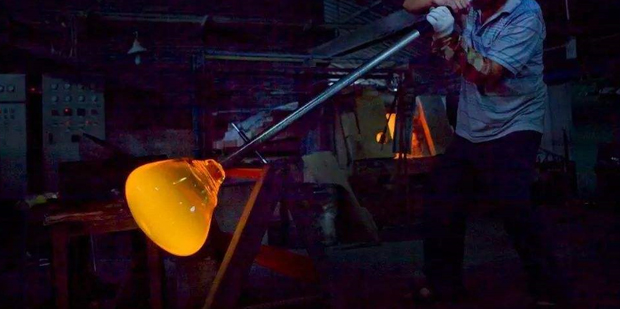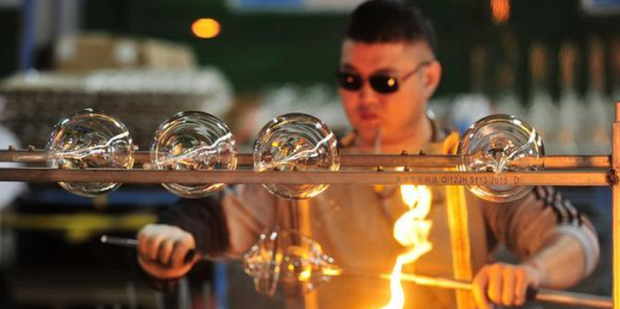What are cosmetics glass jar made of ?
Early stage: Regarding the formulation, the manufacturer should make appropriate adjustments for the specific product. Adding an appropriate amount of zinc oxide to the raw material can improve the toughness of the product. Adding an appropriate amount of colored substances to the raw materials can color the product. The added selenium powder is red, and the amount of selenium powder affects the depth of the color. In general, 20% of the clean recycled material is allowed in the batch, and the recycled material should not be too much, otherwise the product is prone to particle size and protrusions. bubbles etc. All ingredients must be mixed together and thoroughly homogenized before being added to the oven.

To melt the material: Put the mixture in a furnace for high heat melting. The temperature of the oven depends on the various products, usually around 1200-1600 degrees. Fuels are heavy oil, electricity and so on. Generally speaking, there are two types of furnaces: crucible furnaces and retort furnaces. Usually, the crucible has only one joint, and the inlet and outlet ports are located in this port. The trough furnace can be separated from the inlet and outlet (depending on the size of the equipment). This one-joint oven usually needs to be topped overnight and then sealed. In general, newly added materials are only available for 8 hours after melting, so dosing should not be done at any time. Usually added after the material is consumed. Therefore, in general, the material of one cylinder can be used for a day, about 600-900 liters.
Common molding methods for glass molding include blow molding (mechanical blow molding, hand blow molding), pressing, centrifugal rotation, and firing (auxiliary functions). Iron castings are often used for glass molds. The quality of the mold also affects the quality of the product, because some iron contains sand, the product is rough and protruding, and the iron filings are easily removed and adhered to the product at high temperature. The general shape has several vent holes. There are few vent holes, which usually do not affect the molding effect of the product. For the mold with good exhaust effect, the pattern and letters of the product are clear, and the size of the mold joint will also affect the weight of the product's acute angle. The mold must be preheated before use, otherwise the newly produced product is easy to crack. There are two types of automatic feeding in the form of molten feeding: automatic feeding and manual operation. The feeding amount of each product is set before production, and the manual operation completely depends on the experience of the workers, so in the manual operation, the quantity is very important. Too much can easily make the edges too thick. If there are too few, the product may not be complete. Issues such as product edge and bottom thickness and product weight inconsistencies can easily arise due to issues with manual cut control. If the air pressure is too high, the bottom may be thin and the mouth may be thick. If the air pressure is too low, the mouth may blow too thinly, or it may not come out at all, but the mouth is gone. Typical blown products include bottles and cans. During pressing, the frit is formed by pressing an inner mold into an outer mold. The distance between the two molds affects the thickness of the product, and the inner mold is controlled by air pressure, so too high air pressure will shorten the distance between the two molds and make the bottom of the product thinner: if the air pressure is too low, the opposite. Generally speaking, the cup thickness of the straight tube is compressed, but if the product is relatively high and the edge is required to be thin, it is usually inflated, and the thinnest part of the product is in the middle, so the middle part is easy to break. Centrifugal rotation, the mold is mounted on the motor, the material is thrown away, and formed at a certain speed of the mold. If the electric speed is too small, it cannot be opened, resulting in an incomplete product. If it's too fast, you can throw the material away, or throw all the material into the upper part to thicken the upper part and thin the bottom. This method is usually used for strong objects. After the product is out of the mold, it must be clamped with pliers. If the pliers are rusted, the product may be so rusted that it cannot be removed. Therefore, it is necessary to ensure that the pliers are clean and free of rust. Generally wipe or use with glass water.
Burning edge: When the product is directly out of the mold, the mouth is generally not smooth, but it should be burned smoothly under high temperature and greater firepower.

Annealing: After the product is formed, the temperature is very high, about 500-600 degrees. If cooled naturally, it will explode. Therefore, the temperature should be lowered slowly using fire extinguishing equipment. The flame device is shaped like a conveyor belt with a closed top and sides. It is usually over 10 meters long and about 1 meter wide. There are several different temperature zones. The initial temperature is usually the same as the molded product, i.e. 500-600 degrees, and then gradually decreases. The final temperature is generally around 60°C. The flame beating time should not be too short, otherwise the product will burst easily. Generally, the product will not burst at this time, but will burst in the future or during transportation. 6. After inspection, go to post-processing, such as stickers or frosting.
Glass products are prone to problems: cracks Many cracked products do not crack immediately after the fire is extinguished, but in the packaging or due to collision or automatic cracking, which is mainly caused by insufficient annealing or poor packaging. B-bubble products have different sizes of bubbles, which are mainly affected by material purity, recycled material content and furnace temperature. The more impurities in the material, or the higher the amount of material added, and the higher the temperature in the furnace, air bubbles will be generated. C. The surface of the watermark is not smooth, with wrinkles or water marks, which are mainly affected by insufficient temperature or too low mold temperature. D Impurities or stains are caused by impurities in the material or molten material mixed in it, including material flowers, black spots, black spots, etc. The e-side is too thin or too thick, which is mainly caused by more or less cutting of the material when doing it manually. The rust on the F surface is mainly caused by the friction of the mold or fixture. The G-connector is too thick or too pointed, the two shapes do not match well or the pressure is too high. The product H is incomplete and the font is not clear, the reason is that there is too little material or insufficient pressure or low temperature, and the exhaust performance is poor. The surface of the product is dirty, the environment is harsh, the cleaning is insufficient or the operation is improper, which causes the dirt to be adsorbed on the surface of the product.
